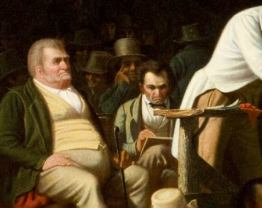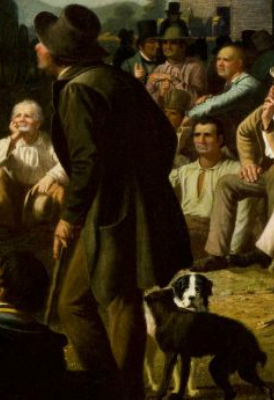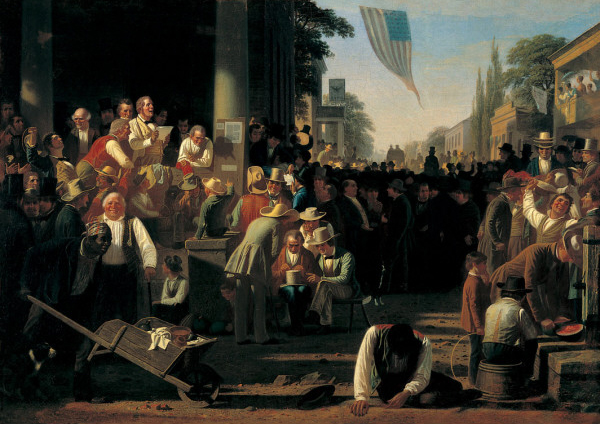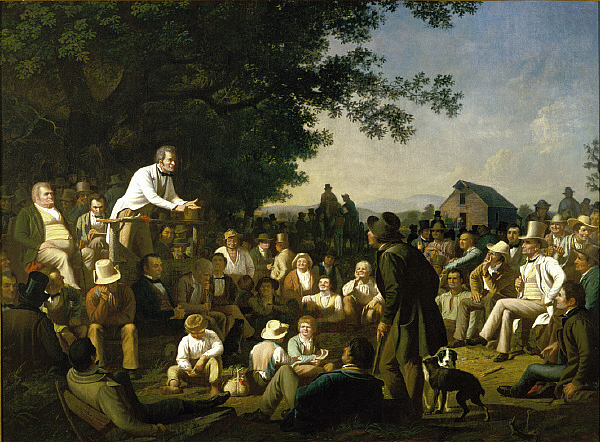This classic composition by George Caleb Bingham (1811-1879) was part of a trio of “Election Paintings” that any classroom might use to illustrate the highs and lows of antebellum American democracy. The spread of universal suffrage for adult white males and the mobilization of popular politics through mass party organizations were key hallmarks of the turbulent age –a fact that Bingham knew well as both a contemporary painter and a Whig politician in Missouri.
Details to Consider

Behind the orator
- From Bingham: “In my orator I have endeavored to personify a wiry politician, grown gray in the pursuit of office and the service of party. His influence upon the crowd is quite manifest, but I have placed behind him a shrewd clear-headed opponent, who is busy taking notes, and who will, when his turn comes, make sophisms fly like cobwebs before the housekeeper’s broom.”
-

The Questioner
From The Independent: “The electorate is thoroughly male and white, but wider than Hogarth’s. There are gentry and farmers, and boys tagging along. An agricultural type asks a question. An orator stands and explains. The gathering laughs. Yet the whole occasion is far from a rough farce. It’s thoroughly anti-Hogarthian in spirit. This is a gathering of stocky, reliable figures, not milling or struggling, but assembling. Apart from the two speakers, everyone is peaceably seated. No one butts in. It’s not a confused riot, it’s an open-air school room. Apparently casual, the people manage spontaneously to arrange themselves in rows, with each face showing – one man, one vote, so to speak. The organisation is full of verticals and horizontals, giving an orderly clarity.”
Related Images

Bingham, “The County Election” (1852)

Bingham, “The Verdict of the People” (1855)
Further Reading
- The St. Louis Museum of Art owns the original “Stump Speaking” oil on canvas (42.5 inches by 58 inches) and offers a concise description of the painting, along with a helpful excerpt about it from one of Bingham’s own letters (quoted above).
- The Independent (UK) produced an insightful short essay on the painting in 2010, one that helped situate Bingham’s work in a tradition of election compositions dating back to William Hogarth’s engravings from in the eighteenth century.
- NEH EDSITEMENT has a great lesson plan discussion about Bingham’s “The County Election” (1852), which also includes a link to a wonderful 2008 essay by historian Jill Lepore on the history of voting practices, “Rock, Paper, Scissors.”
- Historian Nicole Etcheson produced a fascinating post for the New York Times “Disunion” series about Bingham’s attempt to use painting in the Civil War as a way to criticize the policies of a Union commander in Missouri whose harsh methods he questioned.
